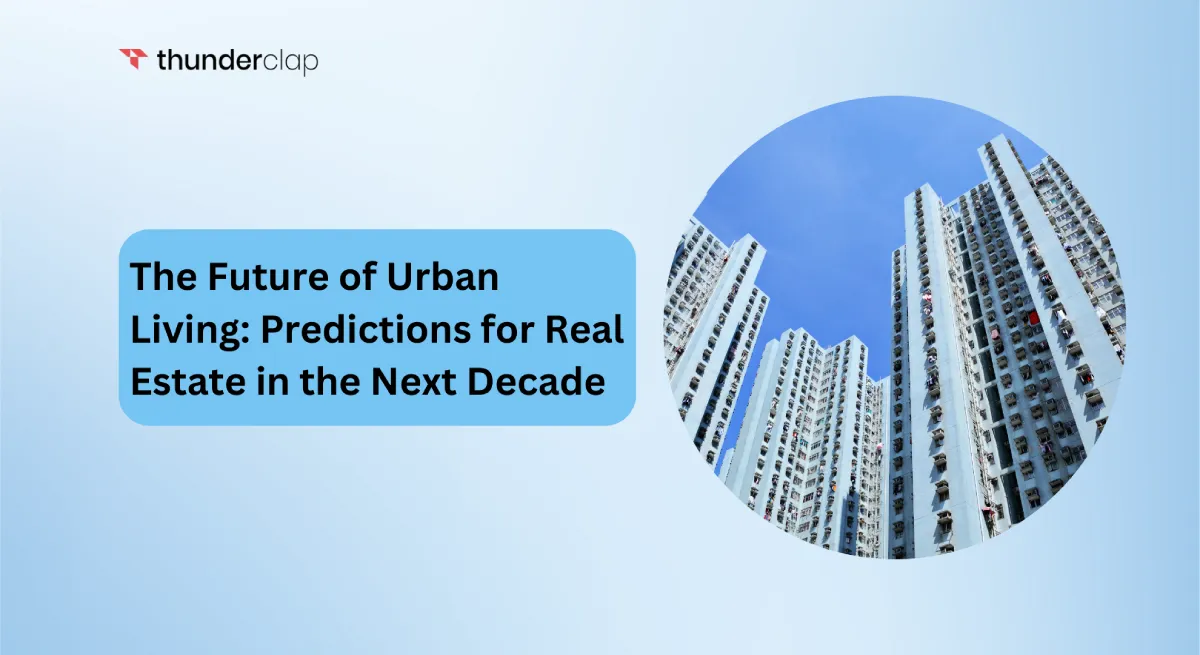The Future of Urban Living: Predictions for Real Estate in the Next Decade
As urbanization continues to accelerate, experts anticipate that by 2050, 68% of the world’s population will live in cities. This period drives significant changes in real estate trends, which impact property development, marketing, and sales.
If social media content creators in the real estate industry intend to increase their online exposure and engagement, they must stay updated with the latest trends. Buying Instagram followers is one strategy Real Estate content creators can use to boost online visibility.
Let us get started with the future of urban living!
Key Predictions For The Future Of Real Estate
The real estate industry is undergoing significant transformations driven by technology and sustainability trends:
1. Smart Cities and Technology Integration
The emergence of smart cities will be driven by integrating new technology into urban living, changing the face of modern cities.
The Internet of Things (IoT) will enable smart houses, which offer homeowners improved energy efficiency, security, and convenience. These homes will quickly become the standard.
Building material innovations will occur rapidly in the construction sector and will be essential for creating smart city infrastructure. Modern construction will use new materials, such as nanoparticles, transparent metal, and self-healing concrete.
2. Sustainable and Eco-friendly Living
The goals of eco-friendly and sustainable living are to lessen human influence on the environment and promote a healthy world. Green building practices, renewable energy sources, and eco-friendly materials will become standard features of new constructions.
Rooftop solar panels will collect sunlight and generate clean, sustainable energy, while microturbines will be installed on buildings to convert wind energy into power.
3. Rise of Affordable Housing Solutions
Co-living and micro-apartment spaces will become increasingly popular, especially in urban areas that provide affordable housing options without compromising on essential amenities.
These strategies will change the world of inexpensive housing, from small living areas to helpful government regulations and cutting-edge building methods.
Construction-related technological developments will significantly bring down building costs. These developments will make it possible to build homes more quickly and affordably, increasing the availability of affordable housing.
4. The Shift in Retail and Commercial Space
Changing consumer behavior and the growth of e-commerce will transform retail and commercial spaces. The commercial real estate market will also experience a shift as companies reassess the need for physical offices due to the rise in remote work.
This trend will fuel the demand for adaptable, flexible spaces that can serve various purposes, blending retail, commercial, and residential functions to create dynamic, multifunctional environments.
5. Transportation and Mobility
With the rise in telecommuting, people will start searching for residences with home offices and versatile workstations that can accommodate both their personal and professional needs.
Moreover, remote living will encourage people to reside in a broader range of locations, altering residential real estate trends and creating new opportunities for flexible living solutions.
6. Resilience and Climate Adaptation
The real estate industry will increasingly focus on resilience and climate adaptation to address the growing impacts of climate change. This will include designing buildings to withstand extreme weather events, integrating flood defenses, and using materials that enhance durability.
Developers will also consider climate risks in site selection and construction practices. These measures will ensure that properties remain functional and valuable despite environmental challenges.
Additionally, innovative designs, such as green roofs and rainwater harvesting systems, will be incorporated to manage urban heat islands and water scarcity.
7. Health And Wellness-Oriented Design
Health and wellness will become central to real estate design, with developers incorporating features that promote physical and mental well-being. This will include improved indoor air quality, natural lighting, green spaces, and fitness amenities.
Buildings will also be designed with spaces for relaxation and community activities. Such designs will cater to the increasing demand for environments that support a healthy lifestyle, reflecting a broader societal shift toward wellness.
8. Cultural And Social Dynamics
Real estate developments will increasingly consider cultural and social dynamics to create more inclusive and vibrant communities. This will involve designing spaces that reflect local heritage and cater to diverse populations.
Mixed-use developments that combine residential, commercial, and recreational spaces will foster social interaction and community engagement. By prioritizing cultural relevance and social cohesion, these projects will aim to enhance the overall quality of life for residents.
As a result, these thoughtfully designed spaces will lead to more robust, more resilient neighborhoods that celebrate diversity and inclusivity.
Conclusion: The Future of Urban Living
Urban living is set to change significantly, driven by technological advances, a stronger focus on sustainability, and changing lifestyle preferences. Cities will become smarter and more connected, using technology like IoT, renewable energy, and advanced building methods.
This will make urban areas more efficient, sustainable, and enjoyable. Real estate brokers and city planners must keep up with these trends to ensure cities stay vibrant, resilient, and inclusive.
Utilize Thunderclap.it’s services to help increase your online presence and influence, making it easier to succeed in this evolving urban landscape.

Leave a Reply